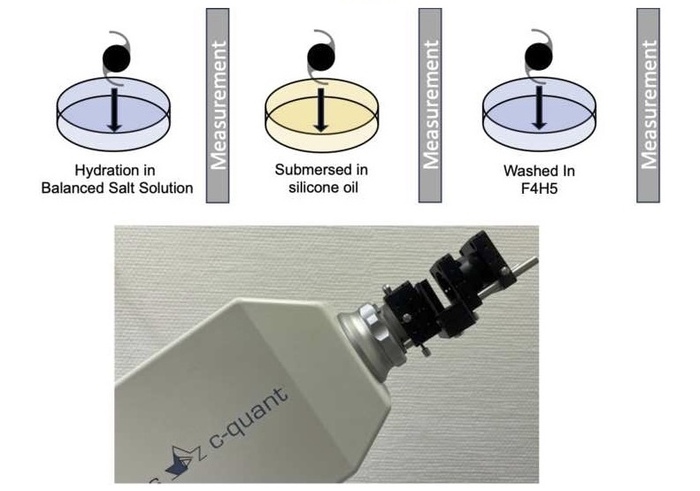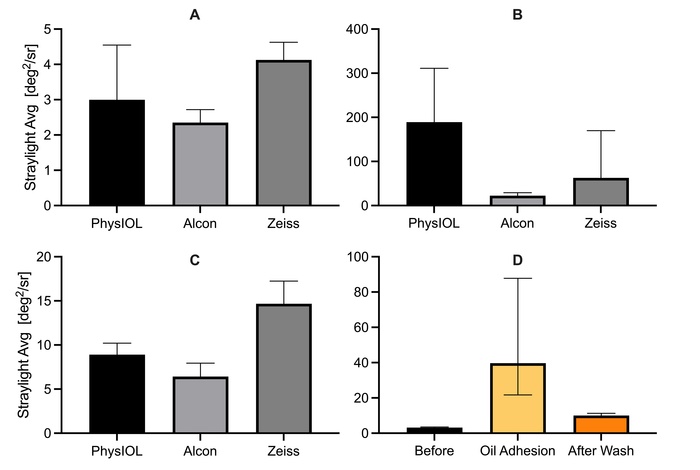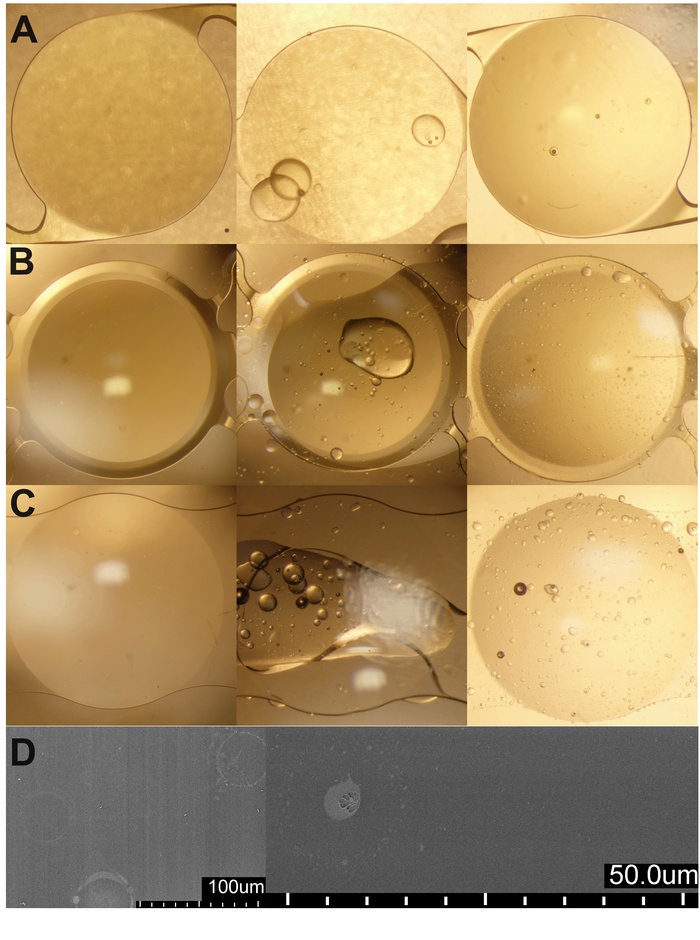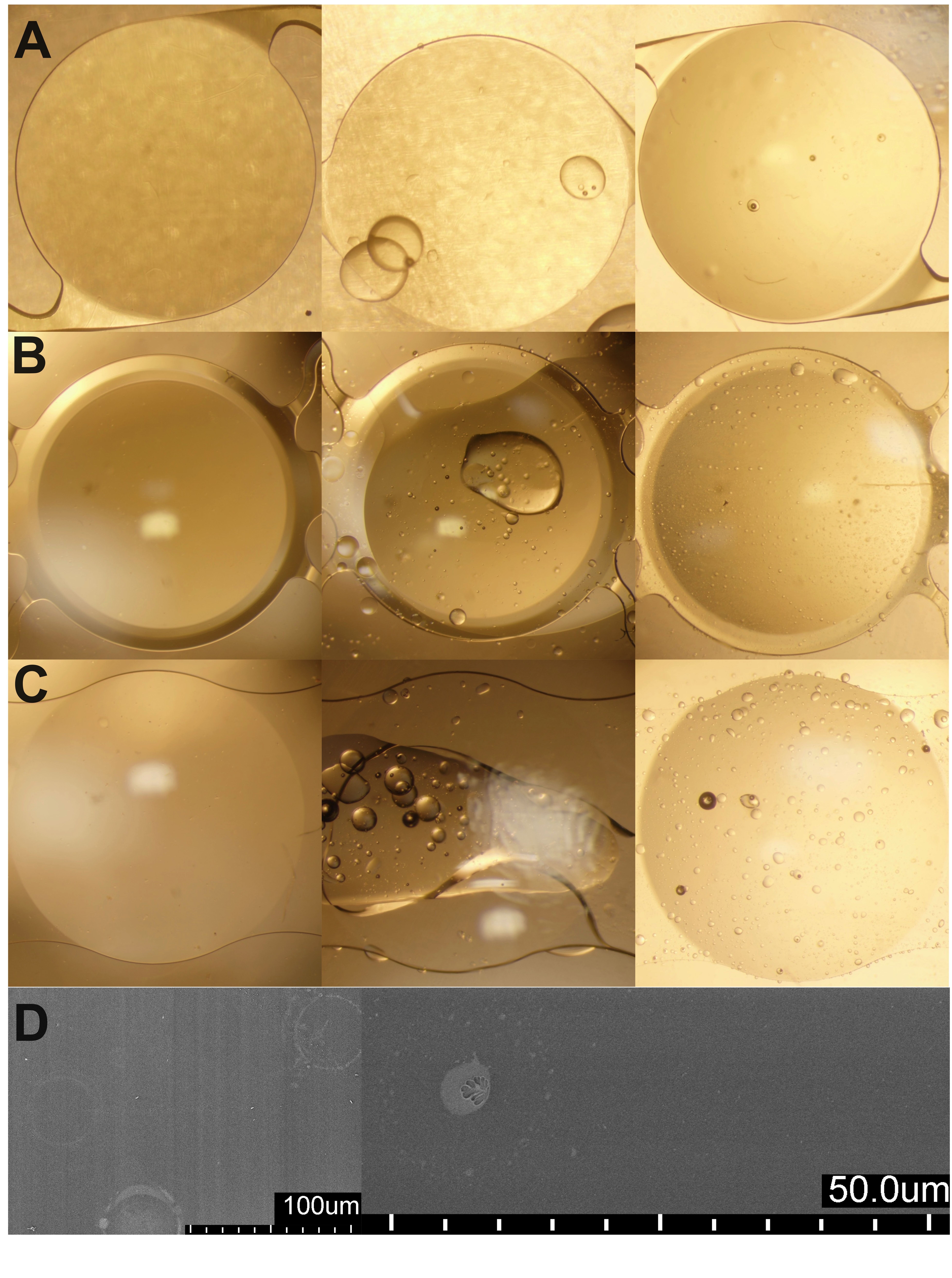Heidelberg, 23 November 2023, we are very pleased to see in the latest American Journal of Ophthalmology our paper published on our experimental study examining straylight from oil droplets that can adhere to intraocular lenses (IOLs).
DOI: https://doi.org/10.1016/j.ajo.2023.11.018
Why study this?
Silicone oil is used as an intraocular endotamponade in vitreoretinal surgery, but there is a complication in that the oil can adhere to intraocular lenses (IOLs). Forward light scattering is a measure to quantify the optical disturbance caused by the oil droplets adherent on the lens surface. In our experimental study, we measured the straylight caused by silicone oil when it adhered to different IOLs and examined whether a semi-fluorinated alkane which is an approved cleaning solution, F4H5, reverses the induced straylight.
What we did.
Under the guidance of Prof. Dr. med. Gerd Auffarth, my fellow researchers and I used lenses from three different manufacturers: Alcon, Physiol and Zeiss. Two were hydrophobic acrylic IOL models and the third was a hydrophilic acrylic with a hydrophobic surface (eight lenses per model: twenty-four lenses in total).

We measured Straylight using the Oculus C-Quant. In order to provide a baseline for our subsequent testing, we first measured the straylight from lenses before contact with silicone oils.
- Twelve of the lenses we measured came in contact with lighter-than-water silicone oil (Siluron 2000)
- The remaining twelve were exposed to heavier-than-water oil (Densiron 68).
- We made a measurement after cleansing each lens with F4H5.
- Finally we used both scanning electron microscopy and light microscopy to detect changes on the lens surface.
What we found.
Straylight was majorly increased in IOLs with adherent silicone oil. (Baseline vs adherent oil median 3.1 [2.1, 3.9] and 39.7 [22.7, 87.8] deg2/sr, respectively, p<0.001).

We found no difference between the heavier- and the lighter-than-water silicone oils. However, between IOL types, induced straylight varied significantly, with one hydrophobic model reaching the highest average straylight.
F4H5 significantly reduced straylight values in all the IOL types (median 9.4 [5.4, 13.8] deg2/sr).
The microscopy revealed surface changes on the IOLs, even after cleaning.

What we concluded.
Silicone oil adhesion to IOLs can induce levels of straylight that are known to cause severe optical disturbance. F4H5 cleansing solution reversed straylight values to only slightly increased values. We found no difference in straylight formation between the lighter- and heavier-than-water silicone oils.
Professor Auffarth commented, “These results indicate a much greater optical disturbance than previously assumed. This highlights that, especially in retinal patients, optics should not be neglected.”
How to access our paper.
The Publisher of the AJO, Elsevier, facilitates and encourages authors to share their articles and you may use the link that follows to access our paper.
 Maximilian Hammer
Maximilian Hammer 
 The safety of Reversible Trifocality.
The safety of Reversible Trifocality.